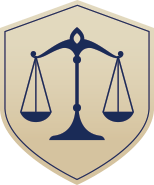Chapter 13
Understanding Chapter 13 Bankruptcy
Chapter 13 Bankruptcy
A chapter 13 bankruptcy is also an option to get your financial house in order. A chapter 13 bankruptcy or re-organization is where you use your income to pay some or all of what you owe to your creditors over time. They vary in timeframe, typically from three to five years, depending on your level of debt.
Chapter 13 bankruptcy requires you to use your income to repay most or all of your debt. Our job is to prove to the court that you can afford to meet your payment obligations. Here are a couple cases as to which you would not file a Chapter 13:
- Your Total Debt Is Too High
- Your Income Is Not Consistent or Too Low
Qualifying
Once qualified, you will set up a plan to which you know how much you will pay your debts and how long the program will be. Priority debts are typically paid first such as child support, alimony, wages owed to employees, and certain tax obligations. Your payments will also include your secured debt such as your car, home, and any payments that have fallen behind.
Can Your Plan Be Modified?
If for some reason the payments are not completed on a Chapter 13 bankruptcy, for example, if you lose your job and can't keep up with the payments, the trustee may modify your plan to account for this hardship. At that time you may also want to consider a Chapter 7 bankruptcy option if eligible.
About Chapter 13 Bankruptcy
Chapter 13 is a reorganization plan for dealing with debt. It is a much more complicated case than Chapter 7, and requires special expertise to successfully complete. It is designed for dealing with special debt problems. Generally it is used for a filer that owes a lot of back taxes, or has a secured property such as a house or a car and is behind on payments, but still wants to keep the secured property. A filer with too much income to qualify for Chapter 7 can file a Chapter 13 and reorganize their debt by paying some portion of the debt, without interest.
The Chapter 13 is open to all individuals with regular income that are within specified debt limits. It is not available for corporate entities. However, an individual must qualify to file a Chapter 13 case. Qualification is based upon income and expenses such that the filer can propose a workable plan. This is generally not a problem for most people looking to solve their debt problems through Chapter 13.
As in Chapter 7, a Petition is filed with the court which gives an accurate description of the filer's current financial situation. It lists all assets and all debt of the filer. It also required all of the filer's income and expenses to be disclosed.
4-6 weeks after filing there is one hearing that the filer must attend called a 341(a) Meeting of Creditors. There is a person at the hearing called a Trustee. The Trustee's job is to make sure that the schedules and plan comply with the rules of Chapter 13. Creditors are allowed to either agree to or object to the plan. After the Meeting of Creditors, a Confirmation Hearing is held before the Bankruptcy judge. The case is assigned to a judge that must confirm the plan.
The most common type of Chapter 13 is one filed to stop a foreclosure on a house or other real property and cure the missed payments over a period of time, generally 5 years. The filer proposes a plan that makes payments to the Trustee which will be sufficient to pay the arrears on the house or other real property. Upon completion of the plan the missed payments are completely cured so there is no longer a foreclosure.
It is sometimes possible to remove or strip a second or third mortgage from the property so that they are no longer a lien. These junior mortgages will no longer need to be paid to keep the house. The lien is removed by order of the court, and the debt is discharged upon completion of the Chapter 13 plan.
Chapter 13 can also be used to save a vehicle from repossession. Filing the petition stops the repossession. A plan is devised that can pay the vehicle in full through the plan. It is sometimes possible to pay less than what is owed on the vehicle and just pay the fair market value of the vehicle.
In addition to dealing with secured debt problems, Chapter 13 can be used at the same time to reduce or eliminate unsecured debt such as, but not limited to, credit cards, personal loans, or medical bills.
Schedule an appointment
at our law firm
in Long Beach, California, to learn more about Chapter 13 bankruptcies.
Browse Our Site
Contact Information
Address:
4326 Atlantic Ave, Long Beach CA 90807 |
Email: danaesq2@aol.com
Phone: 562-989-7030 |
562-833-1818


Payment Plans Available, including Wage Earner, as well as Free Options
Browse Our Site
Contact Information
Address:
4326 Atlantic Ave, Long Beach CA 90807 |
Email: danaesq2@aol.com
Phone: 562-989-7030 |
562-833-1818


Payment Plans Available, including Wage Earner, as well as Free Options
Content, including images, displayed on this website is protected by copyright laws. Downloading, republication, retransmission or reproduction of content on this website is strictly prohibited. Terms of Use
| Privacy Policy
